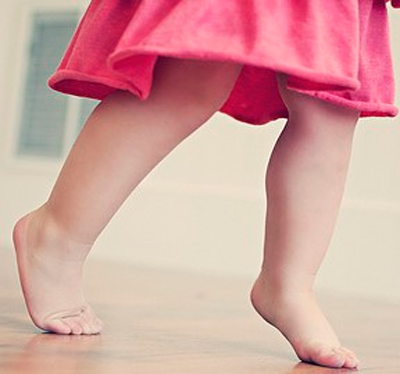Why is my child walking on his/her toes?
 Normal toddler walking on their toes until the age of 2 is normal. Beyond that age this way of walling becomes a habit.
Normal toddler walking on their toes until the age of 2 is normal. Beyond that age this way of walling becomes a habit.
How does toe walking affect my child?
Shortened calf muscles, altered posture of the feet and further changes along the muscles that are involved in maintaining the body in the space are some of the consequences of toe walking. Toe walking also alters other functional activities such as sitting to standing, leaning forward and picking things up from the floor.
It is important to have an assessment with neuro physiotherapist specialised in children.
What does an assessment for a toe walker child cover?
It is important to rule out other issues that the child may have before working on toe walking. In our assessment we look at how the child generally moves:
- Check their posture in sitting and standing.
- Check the balance system in lying, sitting and standing
- Check the muscle power.
- Check the sensation.
- Assess the calf muscles using a surface electrical myograph (EMG). This enables us to see if the calf muscles are more active.
- Use foot scan plate (Rsscan), to check and measure balance mechanism.
What can Birkdale Neuro Rehab Centre do to help a toe walker?
Following a thorough assessment, we work with the child in a way that encourages him/her to want to work on this. The best way is to work with the child through games and encourage the child to stand on their heels.
We also work closely with orthotics and advise the parents to have an insole made if appropriate and to use shoes that light up and make a noise when the heels are down. This will encourage the child correct their walking.
We also use number things like air cushions, balance mats and vibrating mat and encourages the child to play and this can be easily used at home.
